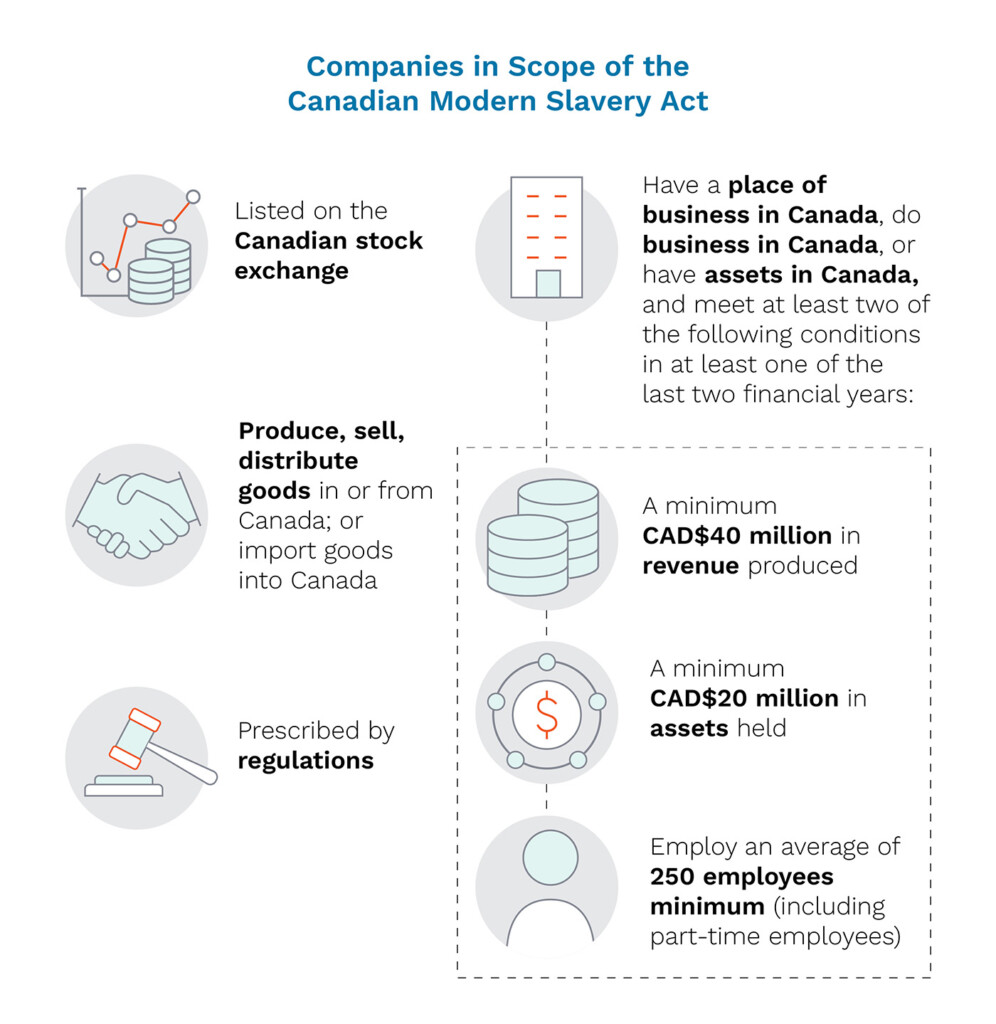Canada’s new modern slavery legislation, the Fighting Against Forced Labour and Child Labour in Supply Chains Act (MSA) went into effect at the start of 2024, with reporting required by the end of March 2024. The turnaround was tight for in-scope companies, who had to report on forced and child labour risks within their supply chain, as well as any mitigation actions taken. To ensure a smooth and successful reporting process in 2025, companies should begin taking proactive steps now.
The MSA is one of many international regulations that businesses must follow to operate a successful business. Governments, investors, and consumers alike are more interested than ever in how commodities come to be and are keen to buy sustainable and ethically-made products.
Canadian companies, and companies operating within Canada, should use compliance to the MSA as a start to think about their bigger sustainability and governance landscape. While non-compliance to the MSA can carry hefty fines – up to CAD$250,000 – the legislation stops short of obliging companies to take formal action against forced and child labour. However, it does require companies to publish their reporting publicly, leaving the fate of company reputation to attentive and invested consumers.
If organizations are open to finding the operational advantages inherent in fully understanding their supply chains, MSA compliance is a great stepping stone to transparent supply chains that keep both regulators and consumers happy.
What is the MSA, or the Fighting Against Forced Labour and Child Labour in Supply Chains Act?
The MSA is formally known as the Fighting Against Forced Labour and Child Labour in Supply Chains Act, and is Canada’s latest legislative bid to fulfill its international commitment to reducing forced and child labour. The Act obliges in-scope Canadian organizations and organizations operating within Canada to compile and submit an annual comprehensive report on working conditions within their supply chain to the government, the organization’s board, and to the general public. This report must be submitted before May 31st.

Figure 1 – In-scope company requirements for Canadian MSA

